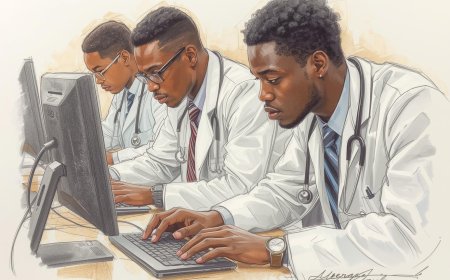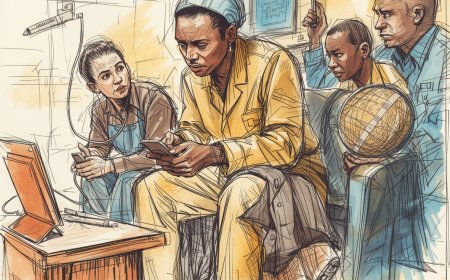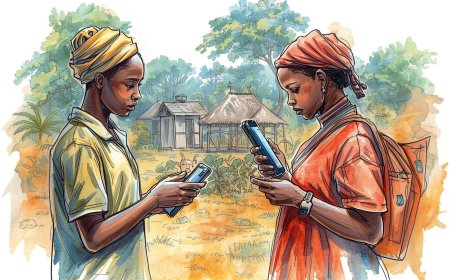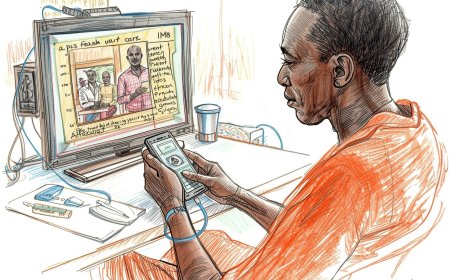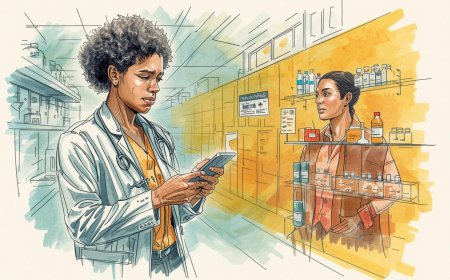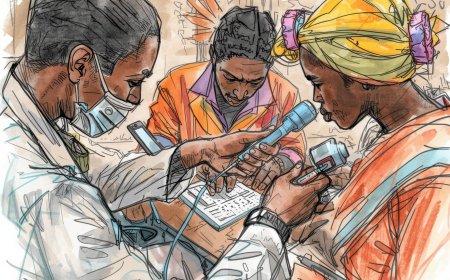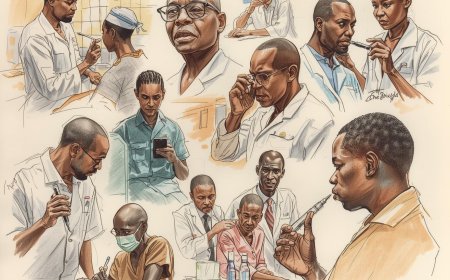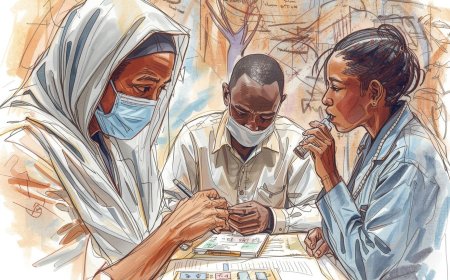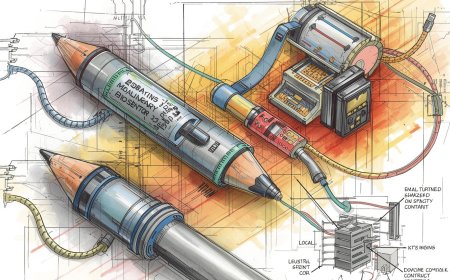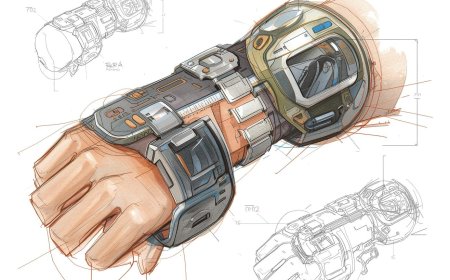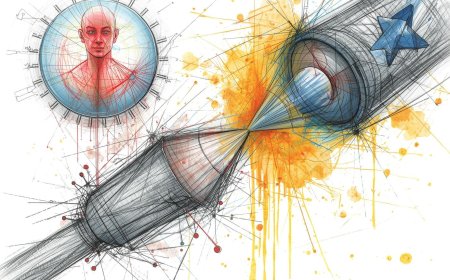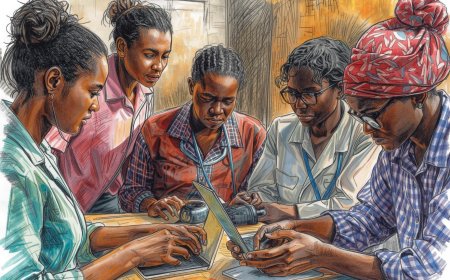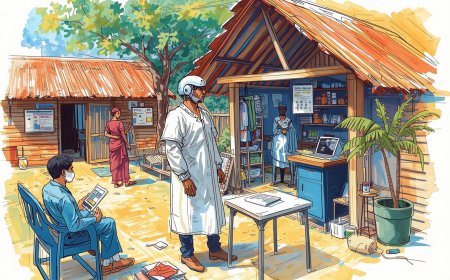Culturally-Informed Virtual Mental Health: Adapting Therapy for African Contexts
Practical, Africa-focused guide to implementing culturally-informed virtual mental health services. Covers evidence (Friendship Bench & digital adaptations), WHO guidance (mhGAP & telemedicine), cultural tailoring of CBT and problem-solving therapies, task-sharing with lay counsellors, tech choices for low-bandwidth settings, safety/governance, monitoring, and a ready-to-use implementation checklist. Packed with real case studies and cheeky field anecdotes. APA citations and live links included.

Short brief: This is for clinicians, programme managers, NGO leads, digital health teams, and policymakers across Africa who want to deploy virtual mental health services that actually work in local communities — not just a Zoom box with generic scripts. Expect evidence (yes — Friendship Bench works), practical step-by-step guidance, cultural adaptations you can copy, safety rules, technology tips for low-bandwidth settings, and a blunt one-page checklist you can paste into a funding proposal.
Start with a rib-cracking (but true) field anecdote
“Dr. Asha launched a teletherapy pilot using a US app translated into Swahili. First patient called saying the app told her to ‘challenge her catastrophic catastrophising’ — and she replied, ‘I didn’t know my catastrophising had a name; I just thought it was family business.’ Dr. Asha learned: therapy models need translation—and a sense of humour—before they’re useful.”
Translation = language + cultural metaphors + locally meaningful examples. If your app can’t explain an idea in terms that an auntie, a fisherman, or a schoolteacher will nod at, it’s not adapted.
Why culturally-informed virtual mental health matters in Africa (fast facts)
-
Task-sharing interventions (lay counsellors using brief psychological therapies) have strong evidence across Africa — notably the Friendship Bench problem-solving therapy, which reduced depression and improved outcomes when delivered by trained lay providers. BioMed Central+1
-
Digital adaptations (chat apps, phone coaching) show promise: the Inuka / Friendship Bench digital pilots and similar mobile problem-solving tools have been used in Kenya and Zimbabwe with feasible results. PMC+1
-
WHO offers operational tools (mhGAP) and telemedicine guidance to help scale mental health services safely in low-resource settings — use them as your baseline for clinical safety and triage. World Health Organization+1
-
Mobile internet and smartphone access are growing across Africa, but large connectivity and affordability gaps remain — design offline-friendly, low-data interventions and include phone/IVR options. GSMA+1
The core design principles (short & sharp)
-
Start with a local problem — identify the specific mental-health need (postnatal depression? adolescent anxiety? substance misuse in miners?). Don’t shoehorn a generic therapy into every context.
-
Use evidence-based, brief therapies that adapt well to lay delivery: Problem-Solving Therapy (PST), Behavioural Activation (BA), and culturally adapted CBT variants. These are amenable to short, structured sessions. PubMed+1
-
Task-share and supervise — train community health workers, peer supporters, or “grandmother” counsellors to deliver sessions; provide clinical supervision and escalation pathways. Friendship Bench is the exemplar. BioMed Central
-
Localise language & metaphors — replace clinical jargon with local idioms of distress, folk narratives, and actionable steps people recognise. Use focus groups to co-create examples. PMC
-
Tech for constraints: Provide phone calls, SMS/IVR, low-data chat, or hybrid in-person + virtual models. Ensure offline fallback and basic privacy (PINs, discreet notifications). World Health Organization+1
Three practical models that work (pick your context)
A. Tele-augmented Friendship Bench (urban + peri-urban)
Lay counsellor does in-person PST sessions at a community site and offers phone follow-ups; severe cases are escalated to remote psychiatrists via scheduled telepsychiatry slots. This preserves cultural trust (face-to-face start) and adds scalability with remote supervision. The Friendship Bench model has been adapted digitally (Inuka) with promising pilots. BioMed Central+1
B. Phone-first PST for remote areas (low bandwidth)
Cohort of CHWs deliver 6–8 structured PST calls (voice), supported by a simple SMS schedule and paper job aids. Supervisors review recorded de-identified session summaries weekly. Use IVR reminders for attendance. This keeps data needs minimal and fits areas with basic mobile coverage. PMC+1
C. Stepped care digital CBT (urban adolescents)
A smartphone app provides culturally adapted psychoeducation and BA modules; users who don’t improve or who express risk are flagged for chat/phone clinician review. Combine automated low-intensity modules with human escalation. Validate modules with local youth before scale. PMC+1
How to culturally adapt therapy — a practical stepwise recipe
-
Rapid formative work (2–3 weeks) — 10–15 interviews + 2 focus groups with the target group to map idioms of distress, care pathways, barriers, and preferred help sources.
-
Translate core techniques into local narratives (e.g., “problem-solving” → “finding a plan for the things that bother you” with concrete metaphors). Annual Reviews
-
Simplify session scripts to 20–40 minutes for phone delivery; include a clear homework task and a pictorial or SMS reminder.
-
Pilot usability (n=30) — test comprehension, cultural fit, and acceptability. Iterate fast.
-
Train lay providers (2 weeks) — roleplay, competency checklists, and crisis management. Add weekly supervision and monthly refresher training. BioMed Central
-
Safety & referral pathways — define red flags (suicide risk, psychosis) and ensure rapid in-person referral or emergency transport. WHO mhGAP can guide clinical triage thresholds. World Health Organization
Practical content examples (copyable)
Problem-Solving Session 1 (phone, 25 minutes)
-
Greeting + confidentiality + ask permission to continue (2 mins).
-
“What’s the main problem?” (open question) (5 mins).
-
Break problem into parts; pick the most solvable (10 mins).
-
Co-create a 1-step plan for the week + contingency (5 mins).
-
End with brief relaxation/grounding and SMS homework reminder (3 mins).
Language tip: use local proverbs as anchors — e.g., “umuraya haukomi kwa kula kwao” (adapt to locale) — but test them. Never invent metaphors without local validation.
Technology choices (practical)
-
Phone calls & WhatsApp voice notes: highest reach and low data. Use for counselling and homework check-ins.
-
SMS/USSD/IVR for reminders & brief psychoeducation: works for feature-phone users.
-
Lightweight web apps for clinicians: session notes, risk flags, and supervision logs; host on secure, low-cost cloud services and enable offline entry for supervisors.
-
Data & privacy: encrypt data in transit (HTTPS), use PINs for app access, and store minimal PII. Follow national data protection laws and WHO telemedicine guidance. World Health Organization+1
Supervision, quality & evaluation — don’t skip this
-
Weekly clinical supervision: senior clinician reviews caseload, listens to random recorded sessions (with consent), and signs off on escalations.
-
Competency checks for lay counsellors: observed roleplay quarterly, with standardized rating scales.
-
Evaluation metrics: reach (enrolled/eligible), engagement (sessions completed), clinical outcomes (PHQ-9 or locally validated measures), safety events, and user satisfaction. Use a stepped-wedge or pre/post design for pilots. BioMed Central+1
Two field case studies (real + realistic)
1) Friendship Bench (Zimbabwe) — task-sharing success
The Friendship Bench trained lay grandmothers to deliver problem-solving therapy on benches outside clinics; RCTs showed reduced depression and improved recovery. The model has been adapted for digital delivery (Inuka) and scaled via supervision structures. This is the strongest Africa-generated evidence for brief, lay-delivered psychosocial therapy. BioMed Central+1
2) Inuka & mobile PST pilots (Kenya) — digital feasibility
Pilots of the Inuka/coach model (chat or call-based PST built on Friendship Bench principles) demonstrated feasibility and acceptability when CHVs and clients used phone coaching with supervision and minimal tech. These pilots highlight the promise and limits of digital delivery in real settings. PMC+1
Safety, legal & ethical checklist (non-negotiable)
-
Consent script covering limits of confidentiality, tech risks, and emergency contacts.
-
Clear SOP for suicide risk (immediate clinician call, family contact, emergency referral). WHO mhGAP offers guidance on management and referral. World Health Organization
-
Data minimisation: collect only what you need and delete logs per national law.
-
Cultural humility: continuous community feedback loops and involvement of local leaders.
-
Equity safeguards: monitor uptake by gender, age, language, and geography to avoid widening disparities. GSMA
Common pitfalls and quick fixes
-
Pitfall: Translating verbatim from Western CBT manuals → Fix: co-create metaphors, test, and simplify. Annual Reviews
-
Pitfall: Relying solely on apps — no human contact → Fix: hybrid models (app + human) work best. PMC
-
Pitfall: Ignoring connectivity & cost → Fix: offer phone/IVR options and budget for airtime reimbursements. GSMA
One-page implementation checklist (copy-paste into your proposal)
-
Target problem & population defined (e.g., postnatal depression, adolescents).
-
Rapid formative research completed (2–3 weeks).
-
Therapy manual adapted (PST/BA/CA-CBT) and translated. PubMed+1
-
Lay counsellor training plan (2 weeks) + supervision schedule.
-
Technology stack chosen (phone/SMS/IVR/app) with offline fallback. World Health Organization+1
-
Safety & referral SOPs (suicide, psychosis) in place. World Health Organization
-
Data protection & consent scripts completed.
-
Pilot metrics & evaluation plan defined (PHQ-9 or local scale). PMC
Further reading & APA references (live links)
-
Chibanda, D., et al. (2015). The Friendship Bench programme: a cluster randomised controlled trial of a brief psychological intervention for common mental disorders delivered by lay health workers in Zimbabwe. International Journal of Mental Health Systems, 9, 21. https://ijmhs.biomedcentral.com/articles/10.1186/s13033-015-0013-y. BioMed Central
-
Chibanda, D., et al. (2011). Problem-solving therapy for depression and common mental disorders in Zimbabwe: pilot study. Study/Abstract. https://pubmed.ncbi.nlm.nih.gov/22029430/. PubMed
-
Dambi, J., et al. (2022). A Digital Mental Health Intervention (Inuka) for Common Mental Disorders: pilot and evaluation. Pilot/feasibility study. https://www.ncbi.nlm.nih.gov/pmc/articles/PMC9555820/. PMC
-
Doukani, A., et al. (2021). A community health volunteer delivered problem-solving mobile application based on the Friendship Bench (Inuka) in Kenya: A pilot cohort study. https://www.ncbi.nlm.nih.gov/pmc/articles/PMC8127638/. PMC
-
World Health Organization. (2019). mhGAP Intervention Guide for mental, neurological and substance use disorders in non-specialized health settings (Version 2.0). https://www.who.int/teams/mental-health-and-substance-use/treatment-care/mental-health-gap-action-programme. World Health Organization
-
World Health Organization. (2022). Consolidated telemedicine implementation guide. https://www.who.int/publications/i/item/9789240059184. World Health Organization
-
Phiri, P., et al. (2023). Evaluation of a culturally adapted cognitive behavioural therapy intervention. Cultural adaptation study. https://www.ncbi.nlm.nih.gov/pmc/articles/PMC9850872/. PMC
-
Huey, S. J. Jr., et al. (2023). Culturally Responsive Cognitive Behavioral Therapy for diverse populations: review. Annual Review of Clinical Psychology. https://www.annualreviews.org/doi/10.1146/annurev-clinpsy-080921-072750. Annual Reviews
-
GSMA. (2024). The State of Mobile Internet Connectivity 2024. https://www.gsma.com/r/wp-content/uploads/2024/10/The-State-of-Mobile-Internet-Connectivity-Report-2024.pdf. GSMA
What's Your Reaction?
 Like
0
Like
0
 Dislike
0
Dislike
0
 Love
0
Love
0
 Funny
0
Funny
0
 Angry
0
Angry
0
 Sad
0
Sad
0
 Wow
0
Wow
0
